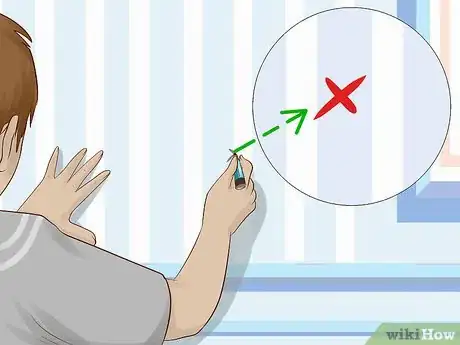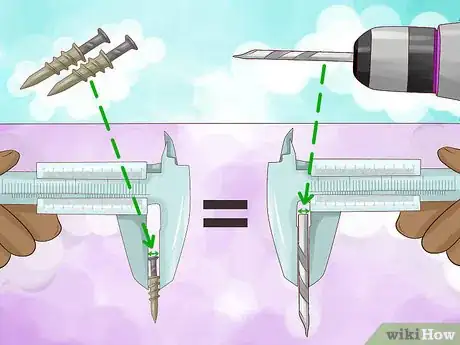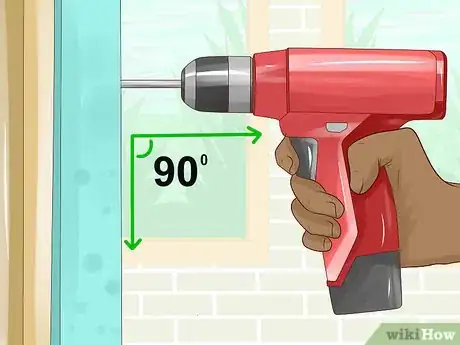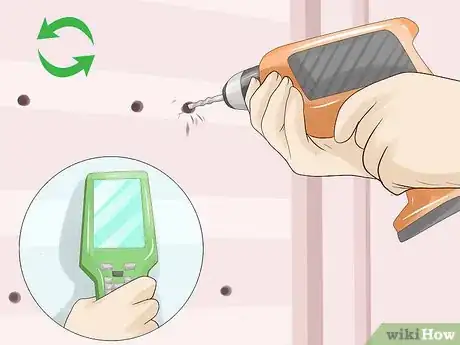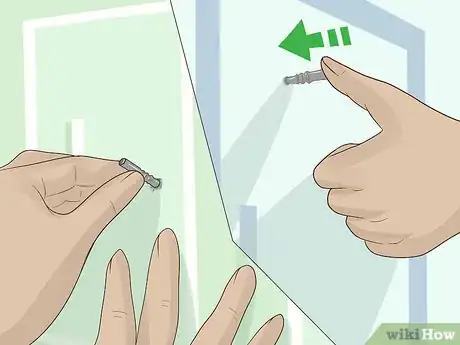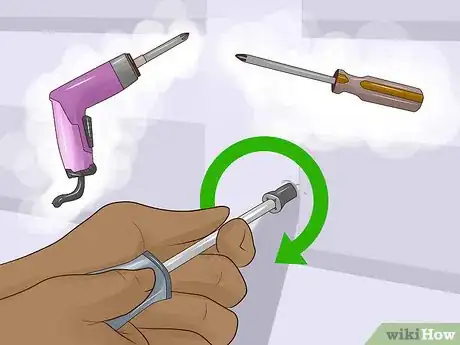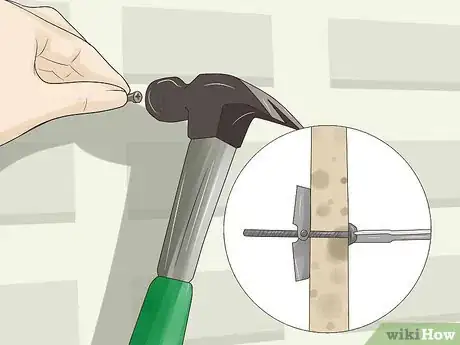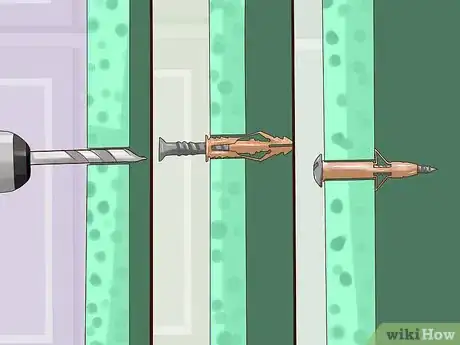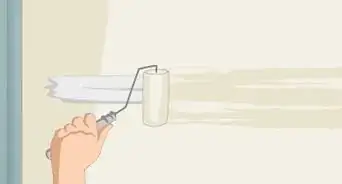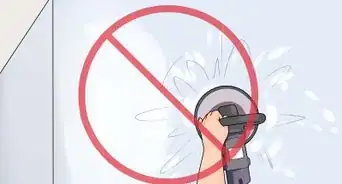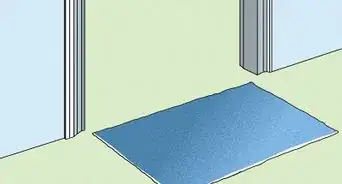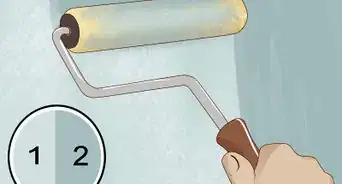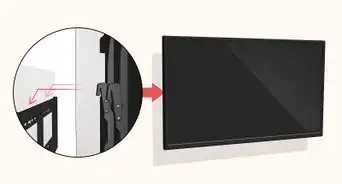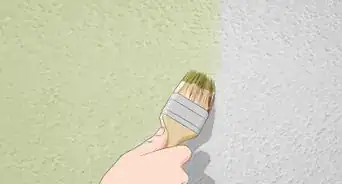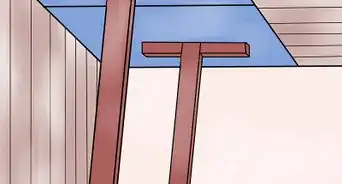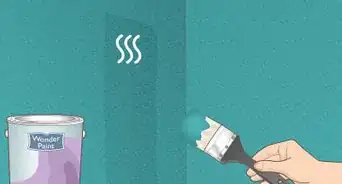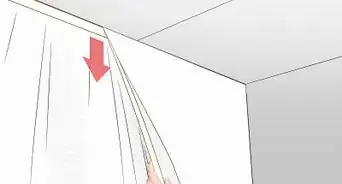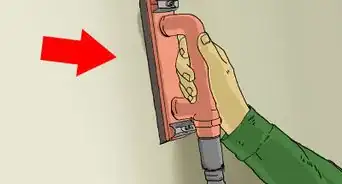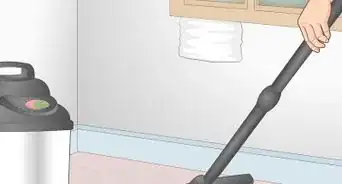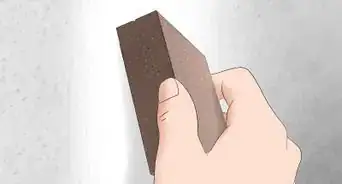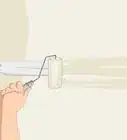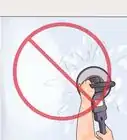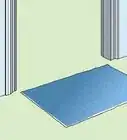This article was co-authored by Jeff Huynh. Jeff Huynh is the owner of Moseybolt, a full service solution in home services, renovations, and repair in the Greater Seattle area. He has over five years of handyman experience. He has a BS in Business Administration from the San Francisco State University and his Certificate in Industrial Electronics Technology from North Seattle College.
There are 10 references cited in this article, which can be found at the bottom of the page.
This article has been viewed 366,145 times.
Drywall anchors are a lifesaver when you need to hang an item directly on a drywall surface but you’re worried that it might slip out or damage the delicate material. Using drywall anchors is as simple as drilling a pilot hole, then pressing, screwing, or tapping the anchor into place. Different types of anchors are designed to hold differently, but they’ll all provide a secure, long-lasting grip on the wall.
Steps
Drilling the Pilot Hole
-
1Pick out a desirable spot to hang your item. Unlike with other mounting jobs, there’s no need to locate a sturdy wall stud in order to use drywall anchors.[1] They’re designed to be placed directly into the drywall so that you can hang even heavy items without fear of slippage or damage.[2]
- Choose a section of wall where your item won’t be forced to compete for space with other fixtures and decorations.
- Not having to hunt for a stud will give you much more freedom over the finished layout of your wall.[3]
-
2Mark your intended hanging site with a pencil. Draw a small dot or ‘X’ at the exact spot where you want to place the anchor. This mark will serve as a visual aid when it’s time to start drilling, making it easier to remember the desired placement of mounted items and allowing you to work quickly and efficiently.[4]
- If you're only installing a single anchor, you can simply eyeball the reference mark based on the desired height and position of the item you'll be hanging.
- If you're installing multiple anchors, use a level and tape measure or ruler to ensure that adjacent markings are properly spaced and level.
Advertisement -
3Fit an electric drill with an appropriately-sized bit. Always use a drill bit that's as close in diameter to the type of anchor you're installing as possible. If the pilot hole is too large, the anchor will fall out easily. If it's too small, you may not be able to get the anchor in, or the tight confines could cause it to malfunction.
- Most drywall anchors have the dimensions clearly labeled on the packaging. Simply note the width of the anchor to determine what size drill bit you need. You want your hole to be slightly smaller than the anchor. When you're installing the anchor, you'll need to lightly tap it into place.
- If you're unable to find the dimensions of the anchors you're using, you may need to perform a size comparison by holding them up side-by-side with several different bits.
-
4Drill straight into the drywall at a precise 90-degree angle. Hold the drill bit perpendicularly against the wall and keep a steady hand to ensure that the hole is as straight as possible. Once you have your pilot hole in place, you can use it to install any type of drywall anchor. [5]
- If you don’t have an electric drill, you can also make a pilot hole using an awl or hammer and nail-set or nail.[6] As another alternative, you can use a Phillips head screwdriver to make your hole. Press the tip of the screwdriver against the wall, then twist it back and forth to create your hole.
- Not every type of wall anchor requires a pre-drilled pilot hole, but it’s a helpful first step and can end up saving you time that you might otherwise spend struggling to get an anchor through stubborn drywall by hand.
-
5Repeat the process for each of your intended hanging sites. If you're mounting an item that requires more than one anchor, like a TV, coat rack, or floating shelf, you'll need to open a pilot hole for each anchor. Assuming you marked the site of each individual pilot hole earlier, this should only take a few extra seconds.
- Take your time drilling to make sure the job gets done right. Your mounted item might not hang correctly if one or more of the holes have been drilled at odd angles.
- When hanging very heavy items, such as TVs, make sure you screw into at least one wall stud. Use a stud finder to locate the stud.
Installing Different Types of Anchors
-
1Fit plastic expansion anchors into the pilot hole by hand. After drilling in the desired spot, simply slip the plastic shaft inside the hole and press firmly on it until it’s seated.[7] When you insert the included mounting screw, the tip of the anchor will flare out, keeping it from coming out of the drywall.[8]
- If your expansion anchor starts to turn when you're inserting your screw, you can cut another anchor lengthwise and slide one half of it into the space between the anchor and the side of the hole. As another alternative, you can pull out the anchor and use the next size up.
- Expansion anchors are the cheapest, most basic type of drywall anchor. They’re best used for hanging lightweight items, such as small framed paintings, paper towel racks, and anything under about 10 lbs.[9]
- It’s important to keep in mind that expansion anchors are only as strong as the wall they’re installed in.[10] Since drywall is a soft material, there’s a greater chance of the anchor coming loose and pulling free over time.
-
2Use an electric drill or screwdriver to secure self-drilling anchors. Place the tip of the anchor into the pilot hole, then twist it clockwise to sink it deep into the drywall. As their name suggests, self-drilling anchors can also be screwed in with a handheld screwdriver if you don’t happen to have an electric drill handy.[11]
- Self-drilling anchors offer slightly more support than basic expansion anchors. This makes them ideal for hanging items that weigh 10-25 lbs, like shadow boxes and curtain rods with heavy drapes.[12]
-
3Tap and screw hollow wall anchors into place. Pound the anchor into the drywall using a hammer, making sure the head is flush with the wall. Then, insert your screwdriver and tighten the central screw. As you do, the collars on the backside will spread out to clamp the wall tight.[13]
- Hollow wall anchors (also known as “molly bolts”) come in various lengths. Make sure you know the thickness of your wall so you can purchase a set of anchors in the correct size.[14]
- When mounting objects that fall in the 25-50 lbs range, like cabinets, floating shelves, and full-length mirrors, hollow wall anchors will usually be your best bet.
-
4Screw toggle bolts down tight for a no-slip fit. On the end of the toggle bolt you’ll find a nut with spring-loaded collapsible wings attached. Guide the wings through the pilot hole—they’ll pop open once they emerge on the other side of the wall. Screw down the adjustable anchor head to brace the drywall from both sides.[15]
- To ensure that the toggle bolt fits properly, you’ll need to drill a pilot hole with the same diameter as the wings when fully collapsed.[16]
- As you screw in your toggle, listen for its wings to pop open. If you don't hear them open, you may need to push in or turn the toggle to help them open.
Expert Q&A
Did you know you can get premium answers for this article?
Unlock premium answers by supporting wikiHow
-
QuestionHow do you put an anchor in drywall without a drill?
 Kevin TurnerKevin Turner is a handyman and the owner of Red Gator Maintenance, a handyman business based in Fresno, California. Working on handyman-related projects since the age of 12, Kevin specializes in a wide variety of home improvement projects such as (but not limited to) lighting/electrical, plumbing, deck staining, drywall repairs, cabinet installation, air conditioning, trash removal, and window, roof, and appliance repairs.
Kevin TurnerKevin Turner is a handyman and the owner of Red Gator Maintenance, a handyman business based in Fresno, California. Working on handyman-related projects since the age of 12, Kevin specializes in a wide variety of home improvement projects such as (but not limited to) lighting/electrical, plumbing, deck staining, drywall repairs, cabinet installation, air conditioning, trash removal, and window, roof, and appliance repairs.
Commercial Handyman
Warnings
- Don't use hollow wall anchors by themselves for items that you manipulate a lot, such as baby gates and kitchen cabinets. Otherwise, the anchors will pull out over time. You can improve their staying power by adding clear silicone around the anchor.⧼thumbs_response⧽
Things You’ll Need
- Plastic expansion anchors
- Self-drilling anchors
- Hollow wall anchors (aka “molly bolts”)
- Toggle bolts
- Mounting screws
- Electric drill
- Screwdriver
- Hammer
- Awl, nail, or nail-set (optional)
References
- ↑ Jeff Huynh. Professional Handyman. Expert Interview. 30 April 2019.
- ↑ https://www.realtor.com/advice/home-improvement/types-of-drywall-anchors/
- ↑ https://www.todayshomeowner.com/video/how-to-use-a-wall-anchors-in-drywall/
- ↑ https://womenyoushouldknow.net/fix-it-friday-anchors-aweigh-how-to-put-anchors-into-walls/
- ↑ https://www.youtube.com/watch?v=kFLxQ9aNlrY&feature=youtu.be&t=28
- ↑ https://womenyoushouldknow.net/fix-it-friday-anchors-aweigh-how-to-put-anchors-into-walls/
- ↑ https://www.naturalhandyman.com/iip/inffastener/infanchor/infanchor.html
- ↑ Jeff Huynh. Professional Handyman. Expert Interview. 30 April 2019.
- ↑ https://womenyoushouldknow.net/fix-it-friday-anchors-aweigh-how-to-put-anchors-into-walls/
- ↑ Jeff Huynh. Professional Handyman. Expert Interview. 30 April 2019.
- ↑ https://www.youtube.com/watch?v=kFLxQ9aNlrY&feature=youtu.be&t=44
- ↑ https://womenyoushouldknow.net/fix-it-friday-anchors-aweigh-how-to-put-anchors-into-walls/
- ↑ https://www.todayshomeowner.com/video/how-to-use-a-wall-anchors-in-drywall/
- ↑ https://www.youtube.com/watch?v=kFLxQ9aNlrY&feature=youtu.be&t=67
- ↑ https://www.youtube.com/watch?v=kFLxQ9aNlrY&feature=youtu.be&t=86
- ↑ https://www.naturalhandyman.com/iip/inffastener/infanchor/infanchor.html
- ↑ Kevin Turner. Commercial Handyman. Expert Interview. 15 July 2020.
About This Article
To use a drywall anchor, mark the spot where you want the anchor to go with a pencil. Fit your drill with a bit that’s about the same diameter as the anchor you’re installing. Hold the drill at a 90° angle relative to the wall and keep it steady as you drill the pilot hole for the anchor. If you’re using a plastic expansion anchor, simply push it into the pilot hole by hand. You’ll need to use a screwdriver or electric drill to screw in a self-drilling anchor. If it’s a hollow wall anchor or molly bolt, tap the anchor in with a hammer, then tighten the central screw with a screwdriver. For a toggle bolt, guide the wings through the hole and listen for them to pop open, then screw the anchor head firmly into place. For more tips, including how to screw a toggle bolt anchor into dry wall, read on!


